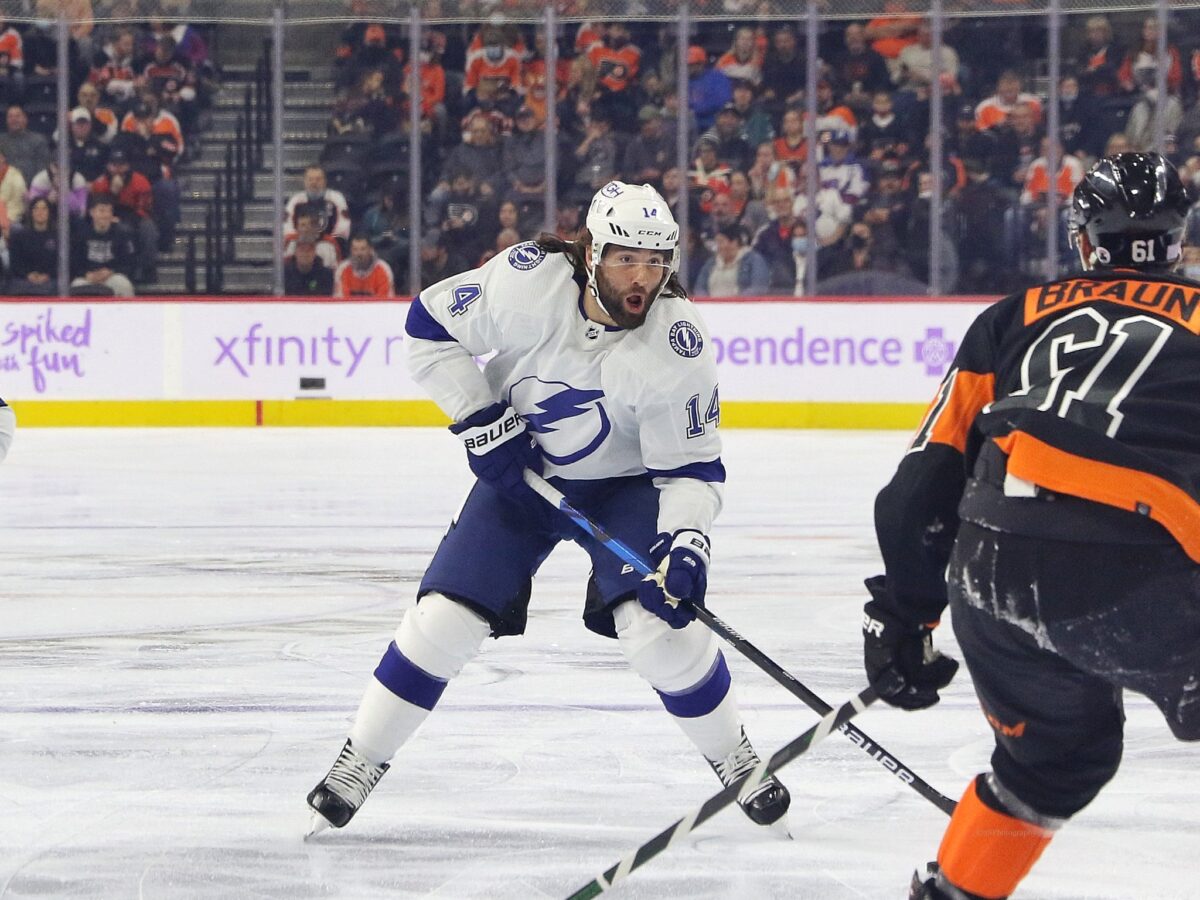Every July, teams around the NHL have a golden opportunity to upgrade their roster. The first week of free agency is one of the most exciting times of the year for hockey fans. Star players change teams, role players receive lucrative contracts, and sometimes intelligent signings are made. Ultimately, free agency is a boom or bust for most front offices. Too often, we witness contracts that teams regret down the line and ruin their chance at competing for the Stanley Cup.
Related: Get to Know Lightning Prospect Conor Geekie
How have the Tampa Bay Lightning done in free agency in recent years? I will examine the previous free agency classes for the Lightning in a mini-series, starting with 2019. Following a devastating series sweep at the hands of the Columbus Blue Jackets, the Lightning were in for a busy offseason. After all, a team that made history and won the Presidents’ Trophy must do better than zero wins in the playoffs, especially against a wild-card opponent. The Lightning were active to bolster their depth on the roster. Now, let’s assign a letter grade to each of their signings in the summer of 2019.
Pat Maroon
The Lightning wanted to add physicality and size to their bottom six forward group, and nobody satisfied their needs more than the 6-foot-3, 234-pound Pat Maroon. Before his days in Tampa Bay, he was one of Connor McDavid’s linemates for a few seasons on the Edmonton Oilers. As the captain’s winger, Maroon had two of his most productive seasons in the league. The power forward registered back-to-back 40-point seasons in Edmonton, including a career-best 27 goals in 2016-17. However, it wasn’t his days in the Oil Country that attracted the Lightning to Maroon. The winger was fresh off a Stanley Cup with his hometown team, the St. Louis Blues. He scored a clutch Game 7 overtime winner against the Dallas Stars, and his physical play style worked magic during the Cinderella run.

After he arrived in Tampa Bay, Maroon instantly became a fan favorite for his big hits and energetic play. He was essential to the fourth line during both Stanley Cup runs for the Lightning. In 280 games across four seasons, Maroon notched 29 goals and 53 assists for 82 points in a Lightning uniform. Considering he signed just a one-year, $900,000 deal with Tampa Bay in free agency, this was profitable for both sides. Believe it or not, Maroon didn’t join the Lightning until August 24 and was a late addition. This deal was simply an above-average signing for a fourth-line forward with character.
Grade: B
Luke Schenn
With the loss of Anton Stralman to their inter-state rival Florida Panthers, the Lightning needed to add defensive depth to fill out the back end for the 2019-20 season. A fifth overall selection of the Toronto Maple Leafs in 2008, Luke Schenn was the player Lightning management sought to fill a vacant spot on the blue line. Schenn was signed as the sixth or seventh defender, eating minutes to give top defensemen like Victor Hedman and Mikhail Sergachev rest. In his most recent year before the deal, Schenn split just 26 games between the Anaheim Ducks and Vancouver Canucks, adding two assists in those games.
While the contract was a one-year deal at $700,000, Schenn was not an impactful defender for the Lightning despite capturing two Stanley Cups with the team. He was outscored 27-10 at all strengths (GF%) on a loaded Lightning team. His second season in Tampa Bay was much better. However, that season does not count toward the grade for the contract he earned in the summer of 2019. Considering his poor performance on a stacked team and bad results in sheltered minutes, the Schenn experiment was not good for the Lightning.
Grade: D
Curtis McElhinney
With Andrei Vasilevskiy emerging as a star goaltender in the league, the Lightning needed a decent backup to play roughly 15 games to give the starting netminder a rest. Tampa Bay turned to veteran goaltender Curtis McElhinney to fill the backup goaltending role. The team gave him a two-year deal with an average annual value of $1.3 million. This deal would be the last McElhinney signed in his career, as he would hang up the skates to retire following the 2020-21 season.
McElhinney performed like a replacement-level goalie in the first year of his deal. He played well enough to earn the backup role again in 2020-21, posting a .906 save percentage (SV%) in 18 contests. However, the last 12 games of his NHL career were a disaster. He recorded a minus-13.05 goals saved above expected (GSAx) at 5-on-5 (via EvolvingHockey). Overall, McElhinney was just a veteran backup goaltender to give Vasilevskiy time to rest. He had the worst performance of his career with the Lightning, which hindered his grade significantly.
Grade: D
Closing Thoughts
The 2019 off-season was the first for Julien BriseBois as the general manager of the Lightning. He didn’t make any roster-altering moves in free agency, but Maroon was a solid pickup for the culture of the championship teams. Schenn and McElhinney weren’t impactful in their tenure with the Lightning, but the deals were too minor to affect the Lightning’s tight salary cap situation. Tampa Bay made their boldest moves in the trade market, a trend we will see throughout the rest of the series.
